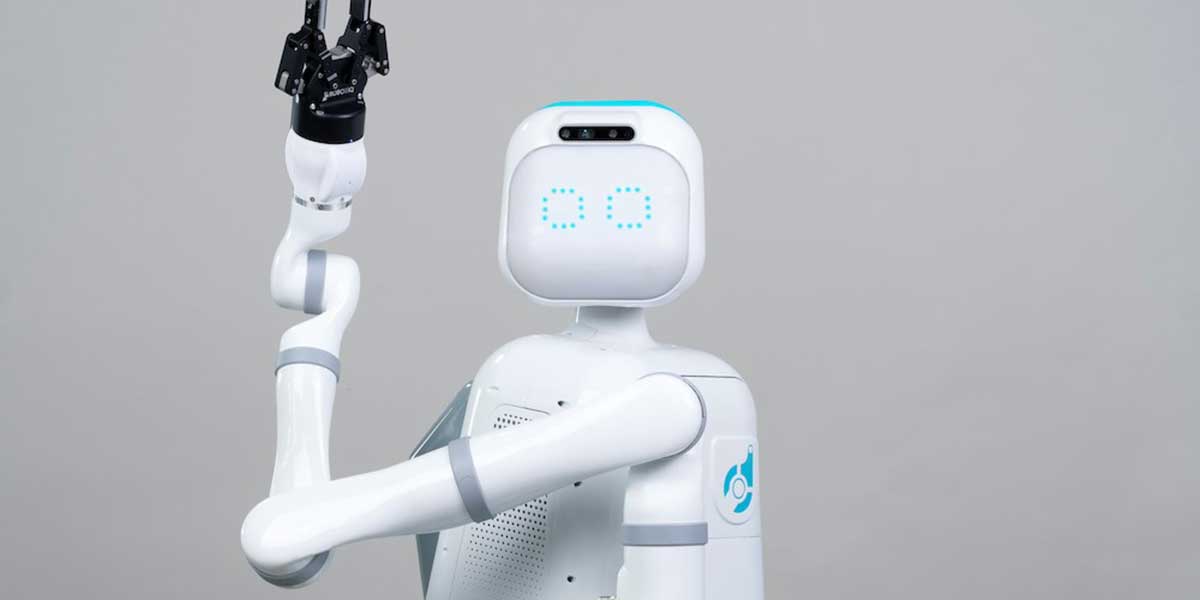AWS Public Sector Blog
How AI-powered robotics give nurses more time to spend with patients
COVID-19 has been challenging for all industries. But hospitals and nurses were especially hard hit, suffering from extreme and prolonged adverse working conditions due to COVID-19. During the pandemic, healthcare workers’ rates of post-traumatic stress disorder soared; three out of 10 of them considered leaving healthcare altogether.
Nursing shortages are not a new phenomenon, but the pandemic has exacerbated the problem. The situation has forced hospitals to think creatively about their staffing models, hiring practices, compensation, and benefits. It has also brought clinical teams, operators, and IT departments together in an effort to seek new ways to use technology. One healthcare system is using technology powered by the cloud, including artificial intelligence (AI) and machine learning (ML), to help address these nurse staffing challenges.
Mary Washington Healthcare looks to innovative healthcare solutions
Mary Washington Healthcare (MWHC) is a nonprofit healthcare system in Virginia that provides inpatient and outpatient care through over 50 facilities including two hospitals: Mary Washington Hospital, a 471-bed medical center, and Stafford Hospital, a 100-bed facility. Shortly after the Delta variant surge, they faced staffing challenges due to increased COVID-19 hospitalizations and reduced clinical staff due to burn out.
In addition to the challenge of finding and hiring new staff, MWHC’s current staff was exhausted due the long hours and intensity associated with caring for patients with COVID-19. To address the problem, they tasked an interdisciplinary committee to develop recommendations. Cody Blankenship, vice president of performance improvement, and Eileen Dohmann, senior vice president and chief nursing officer at MWHC, were willing to look at unconventional options.
“Our work with Diligent Robotics arose out of the Mary Washington Healthcare’s Innovation Council, which seeks to leverage technology for the purposes of supporting clinical staff and improving the quality of patient care,” said Cody.
Robotics and machine learning help nurses on the hospital floor
Like most hospitals, MWHC’s nurses and clinical care teams are pulled in many directions. Hospitals are often built with mission-critical departments spread across different units, wings, buildings, and floors; as a result, nurses have to leave their patients to conduct routine tasks like transferring lab specimens, medications, and medical supplies. MWHC found that their nurses were spending 30% of their time away from their unit – difficult at the best of times, and unacceptable during a pandemic, when nurses were sometimes the only human contact COVID-19 patients had.
MWHC turned to Diligent Robotics, the robotics and AI company that created Moxi—a hospital robot assistant that helps clinical staff with routine, non-patient-facing tasks. Successfully deployed in hospitals across the country, Moxi supports hospital staff by handling fetch-and-deliver tasks for frontline clinicians. At MWHC, Moxi currently travels between 37 distinct areas and departments taking on a wide variety of tasks including food orders, medication delivery and pickup, specimen collection and dropoff, and more. Moxi’s badging system makes sure humans are at the beginning and end of each transaction, swiping in to confirm that the right item has been sent and swiping out to confirm that it’s been received.
Moxi leverages Amazon Web Services (AWS) to store data, perform fleet scheduling, and build out ML infrastructure. Diligent Robotics uses Amazon Simple Storage Service (Amazon S3) buckets to store data in the cloud and perform optimizations in routes and scheduling. The Moxi team also uses Amazon SageMaker to help the company scale their ML work instead of having to develop each algorithm from scratch in-house.
Hospital staff and patients find support in cloud-powered robot, Moxi
To get staff comfortable with their new colleague, Moxi, Eileen started taking the robot with her wherever she went. Thanks to lots of meet and greets (and a pizza party), nurses started to realize how Moxi could help. Today, nurses are coming up with their own ideas for how to deploy Moxi to improve efficiency and care. For instance, nurses asked for additional location to be added to Moxi’s workflow so that it could run COVID-19 tests to the micro-biology lab. That change was implemented within three weeks of Moxi’s deployment at MWHC. Shortly thereafter, nurses requested and implemented a new routine for Moxi to deliver boxed meals in the evening hours for patients who were admitted after normal dinner hours.
“Shortly after we got started, Moxi took a tremendous amount of pressure off of our nurses and it reduced the anxiety from patients and staff – because Moxi was reliable and available 24/7,” said Eileen.
At MWHC, some of Moxi’s most memorable tasks are also some of its simplest. At the height of the pandemic, it collected chargers for tablets and phones so COVID-19 patients could video call their families.
Thanks to Moxi, MWHC nurses, certified nursing assistants and techs remain at bedsides. They spend more time practicing at the top of their licenses. And, most importantly, they get to focus on taking care of patients.
To learn more about Moxi, visit Diligent Robotics and Mary Washington Healthcare.
Learn more about machine learning on AWS and machine learning for healthcare.
Read more stories about AWS for healthcare:
- Amazon Alexa helps deliver and expand patient care across Canada
- Solving medical mysteries in the AWS Cloud: Medical data-sharing innovation through the Undiagnosed Diseases Network
- Wellforce announces migration of the health system’s digital healthcare ecosystem to AWS
- Bali uses the cloud to fight COVID-19 misinformation and save lives
Subscribe to the AWS Public Sector Blog newsletter to get the latest in AWS tools, solutions, and innovations from the public sector delivered to your inbox, or contact us.
Please take a few minutes to share insights regarding your experience with the AWS Public Sector Blog in this survey, and we’ll use feedback from the survey to create more content aligned with the preferences of our readers.
